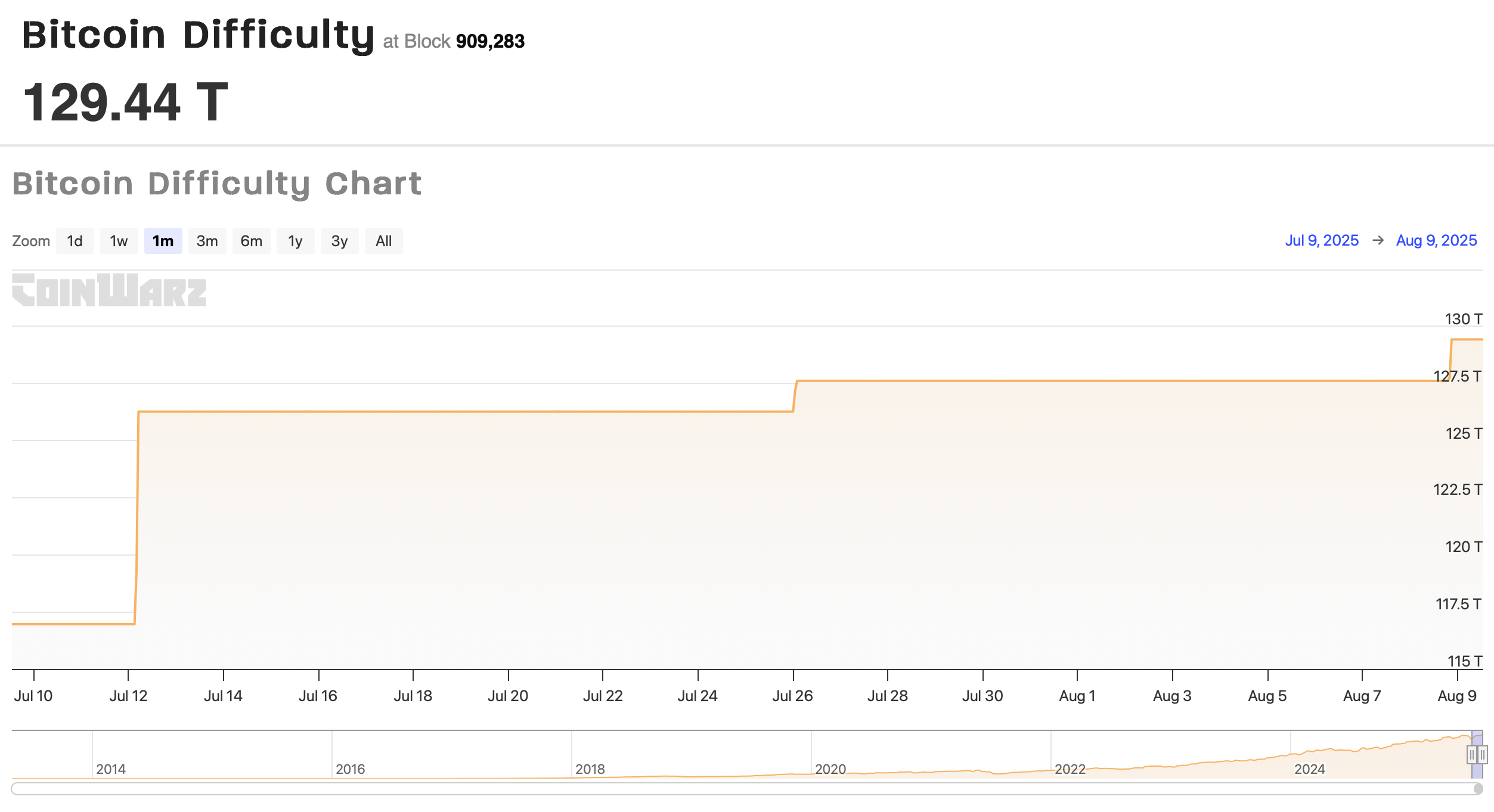Bitcoin block rewards just became harder to capture after the network’s difficulty climbed 1.42% at block height 909,216 on Friday. That adjustment pushed the difficulty to 129.44 trillion — the highest mark in the network’s history.
In simple terms, 129.44 trillion reflects the average number of hashes miners must compute to successfully unearth a new block. Bitcoin’s mining difficulty adjusts about every two weeks (every 2,016 blocks) to keep block discovery close to the 10-minute target, no matter how much computational power — or hashrate — the network commands.

Bitcoin Difficulty on Aug. 9, 2025. Source: coinwarz.com
With hashrate hitting record highs, blocks have been found faster than usual, prompting the latest difficulty hike. If blocks slow below the 10-minute average, the system lowers difficulty instead. So far in 2025, there have been 16 difficulty changes, beginning Jan. 12 with a modest 0.61% uptick.
Of those, 11 were increases, adding up to a 34.27% climb, while the five decreases trimmed 16.54% from the total. That leaves Bitcoin’s mining difficulty up 17.73% for the year to date. The newest increase has also nudged the hashrate slightly lower.
After reaching a record 976 exahash per second (EH/s) on Aug. 8, the hashrate has eased to 965.97 EH/s. It’s still early to predict the exact outcome for the next retarget on Aug. 29, 2025, but current data points to a possible 1.77% difficulty reduction.
Bitcoin’s mining difficulty continues to push into record territory in 2025, driven by unprecedented hashrate levels and frequent upward adjustments. With the next retarget looming, miners are navigating a tighter race for block rewards while watching for signs of a potential difficulty drop or increase later this month.
免责声明:本文章仅代表作者个人观点,不代表本平台的立场和观点。本文章仅供信息分享,不构成对任何人的任何投资建议。用户与作者之间的任何争议,与本平台无关。如网页中刊载的文章或图片涉及侵权,请提供相关的权利证明和身份证明发送邮件到support@aicoin.com,本平台相关工作人员将会进行核查。




